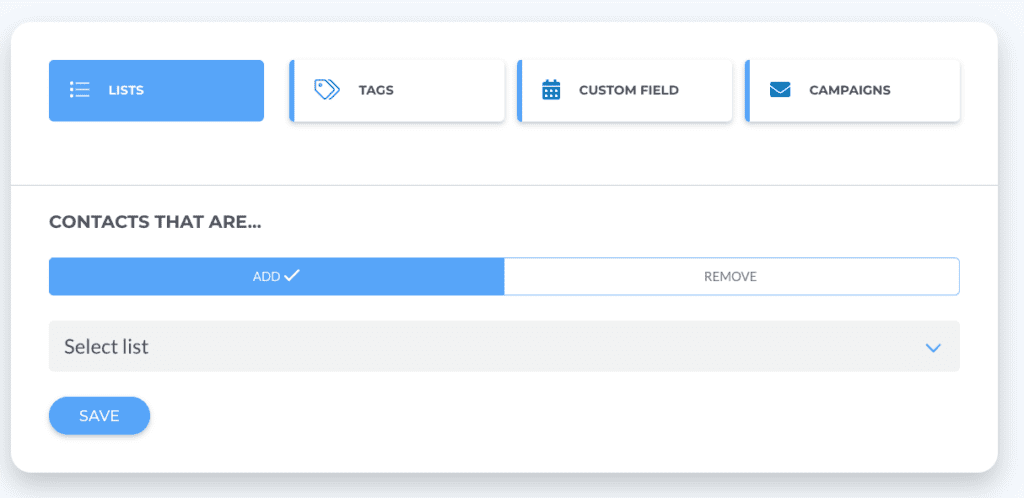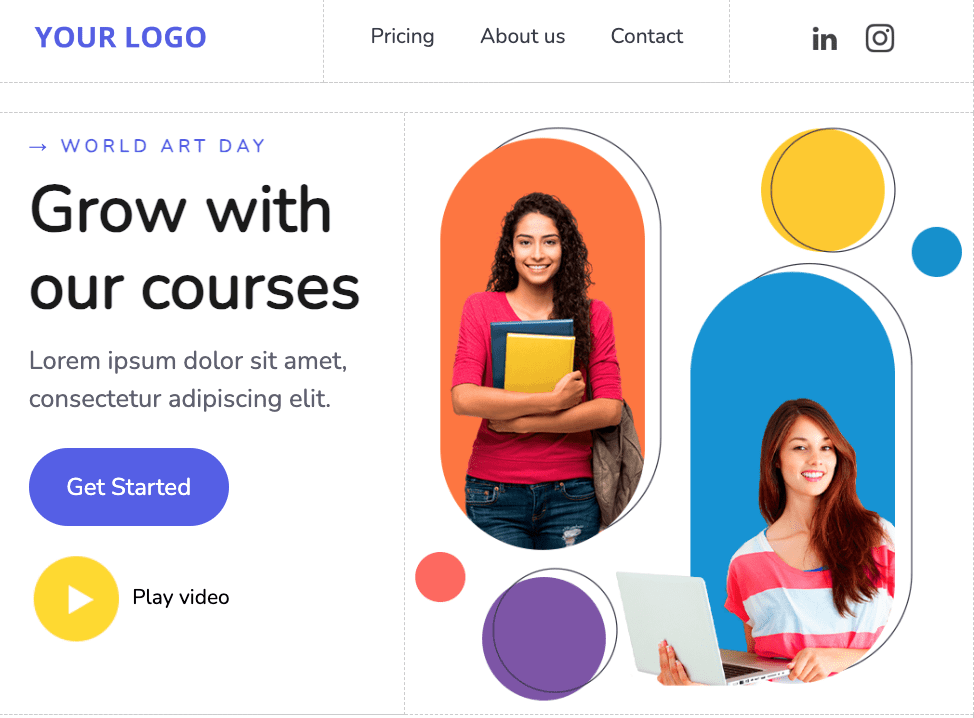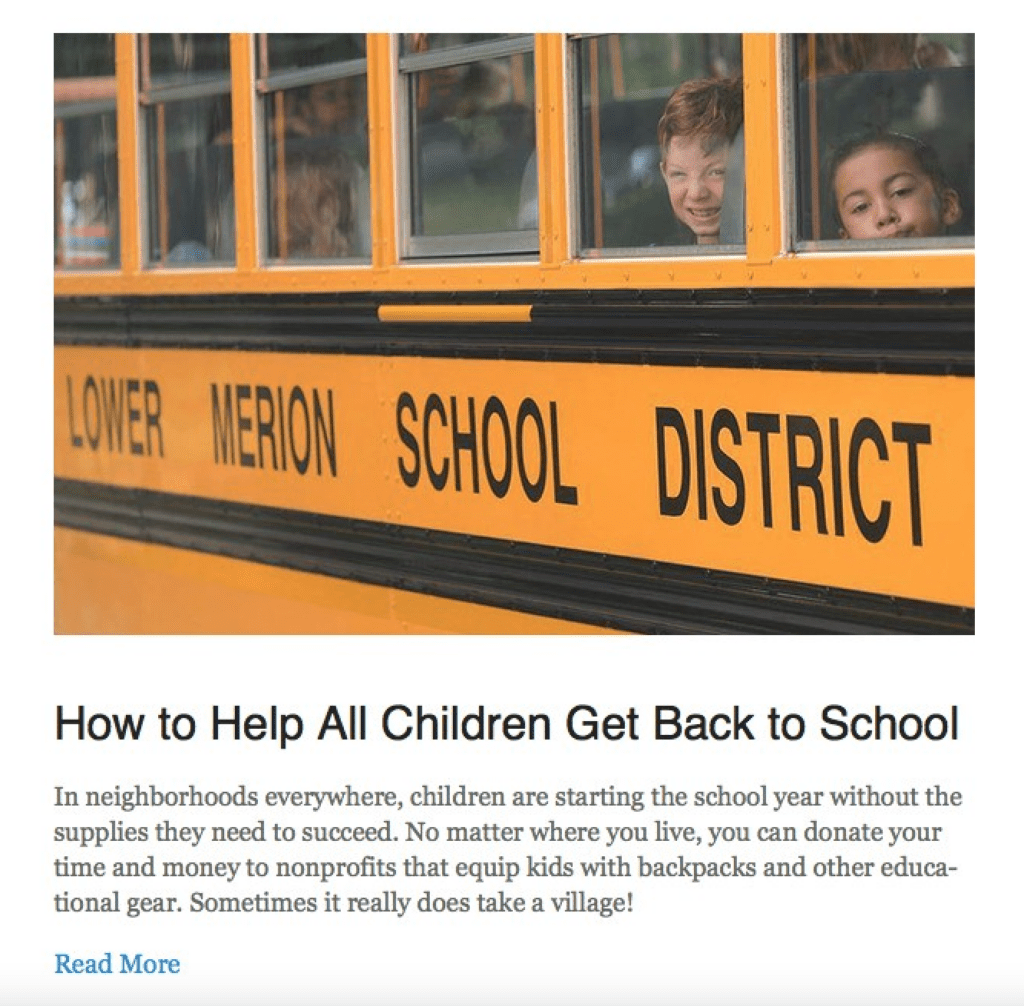
By Lauren H. Dowdle
Between managing students, faculty, district expectations, and the every-day tasks that come with working at an educational institution, school staff must often do more with fewer resources. Having to send regular school newsletters can seem like a daunting task with everything else that’s going on.
But with these eight best practices, you can become more efficient with your email marketing and send engaging newsletters in the process.
Create automated emails
It would be pretty amazing if school newsletters created themselves, right? There might not be a way for them to magically appear out of thin air, but you can automate them to send by themselves at just the right time.
Automation allows you to send timely, personalized emails to your subscribers based on their actions and information. For example, you can trigger an email to send if they are added to a list or tag, engage with a campaign, and based on a date (ex. birthday).

You’ll need to set up the email and journey (i.e. where you’ll build the automated workflow). But once you do the initial setup, the emails will go out to subscribers automatically. No more needing to manually send the basic messages—like welcome emails when a student enrolls, birthday wishes to students and staff, or instructions if they sign up for an event.
Use email templates
Designing an email is often the most time-consuming part of sending a school newsletter. While there are certain elements you’ll need to add to the original base design you’ll use for your newsletter—like the school logo—take advantage of your email service providers’ pre-made templates. Instead of designing the newsletter from scratch, you can save precious time that you can spend elsewhere.
Robly offers dozens of templates, including several specifically for newsletters and educational institutes. Simply swap out the logo and text placeholders with your materials. You can customize the design as much (or as little) as you want with a drag-and-drop editor.

Keep it short
There’s no need to write a novel with each newsletter you sent out. In fact, shorter is actually better (for you and the subscriber).
A few sentences on each topic with a link to the website for more information is plenty. That will keep subscribers from getting overwhelmed with all of the content—and also help them better engage with the content they do want to read more about.
For example, include preview text and a photo for two or three blogs that share information about what’s going on in the school that month with a button they can click to read the full article.

Add personalization
Saving time on your school newsletter doesn’t mean cutting corners. In fact, you can make each email look like it was created specifically for the subscriber without making any extra work for you by using merge tags.
Adding a merge tag—such as their first name in the subject line or body of the email—gives the newsletter a personalized touch. Just make sure to send yourself a test email before it goes out to your subscribers and check that the merge tag shows up correctly.

Repurpose content
There’s no reason to reinvent the wheel with each newsletter, so don’t be afraid to give new life to previously used content.
For example, if there’s an annual fundraiser the school hosts, pull from the content created last year, and update any information that’s changed. And be sure to put in the correct dates! You can also give it a fresh look with new photos.
Ask for submissions
Encouraging students, families, and faculty to contribute content for the newsletter makes your job easier and improves engagement and a sense of loyalty of the school.
Ask them to submit photos and write-ups about events they participated in, class news, honors they’ve received, or projects they’re working on. The rest of your subscribers will enjoy reading about what’s going on with the different groups—and parents will want to open the emails to see if their child was featured.
Once you receive the information, read through it and edit as needed and then paste it into the school newsletter. Then, include a call to action at the bottom of the newsletter telling them where to send ideas for future school emails to keep them coming in.
Focus on photos
Everyone loves looking at photos to see if they know of anyone who’s in them, making them a great tool to improve email engagement. Another good thing about images is that they’re easy to upload into your school newsletter, needing only a sentence or two about each one to tell what they’re from.
So when you’re in a bind for time, create a photo-heavy email to showcase what your school and its students and faculty have been up to. Be sure to let subscribers know to expect the photos with an attention-grabbing subject line so they’ll want to open up the email.
Even if you only have one photo to share, you can run it big to make it the main focus of the email and catch your subscribers’ attention like in this example.

Plan ahead
Whether you send weekly, bi-weekly, or monthly newsletters, you know when they are supposed to go out. Instead of waiting until the day of to put the email together, create them well in advance and schedule the emails to go out.
Pick a day that’s less busy to put the newsletter together, and use your ESP to schedule its send date for the future. You can go back to it later if you need to add or change anything, but that keeps you from trying to put the whole newsletter together at one time. This is especially helpful with back to school emails because we know how hectic things get leading up to the first day.
You’ve got enough on you each day, so incorporate these best practices to make sending school newsletters easier!

